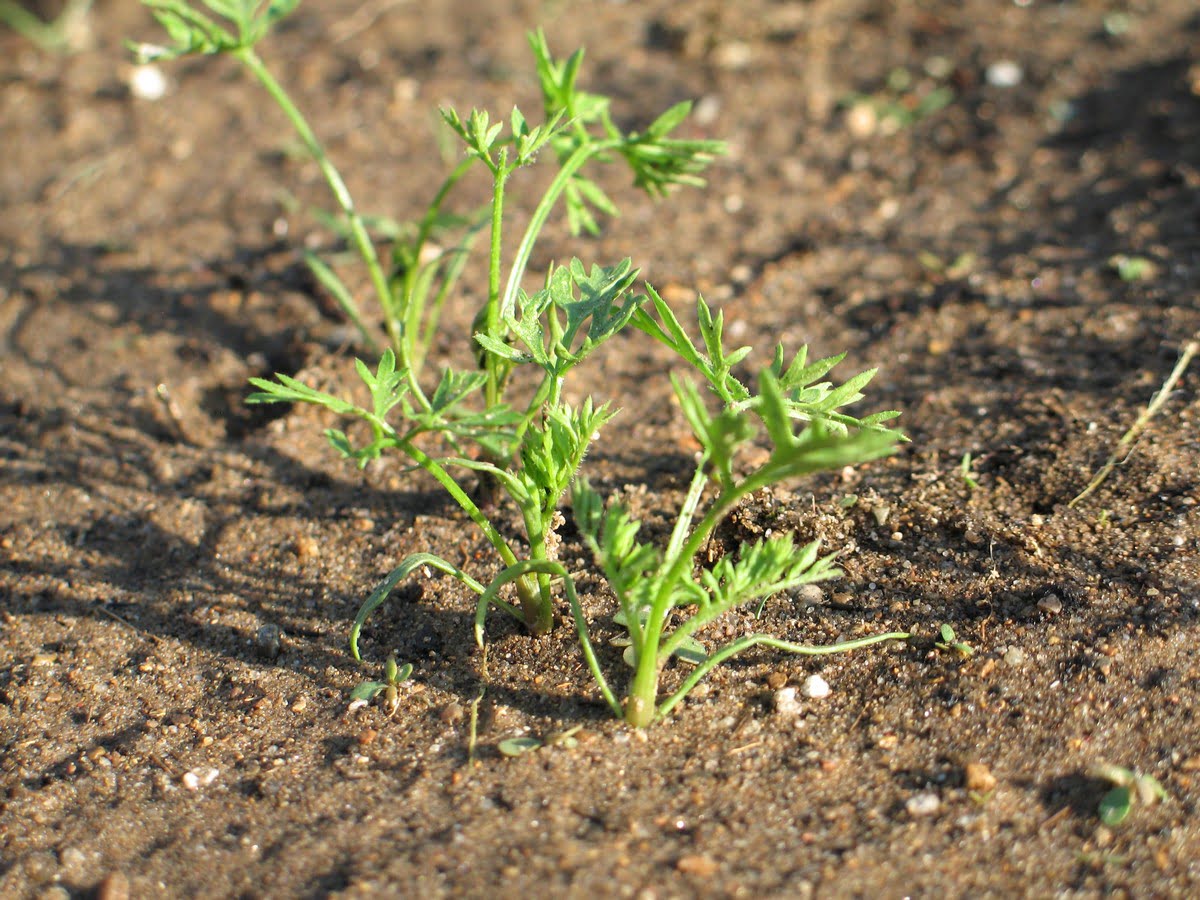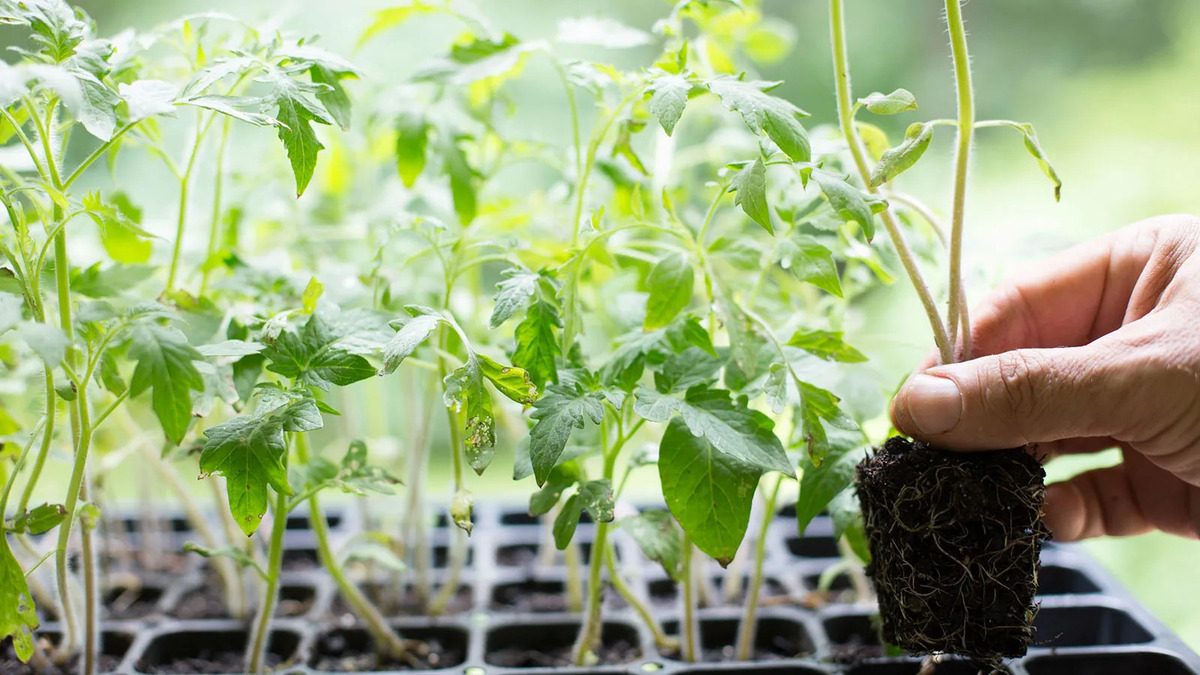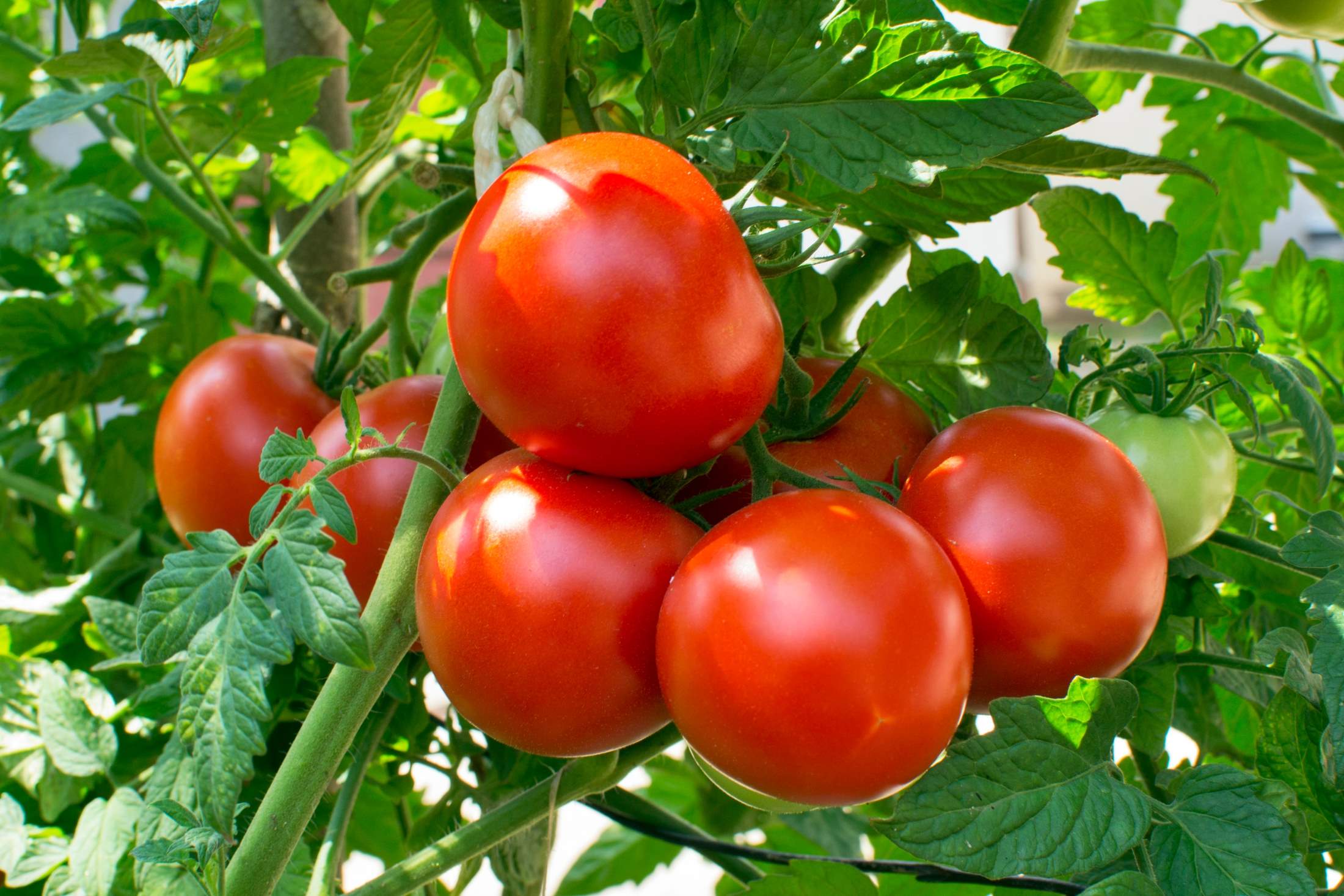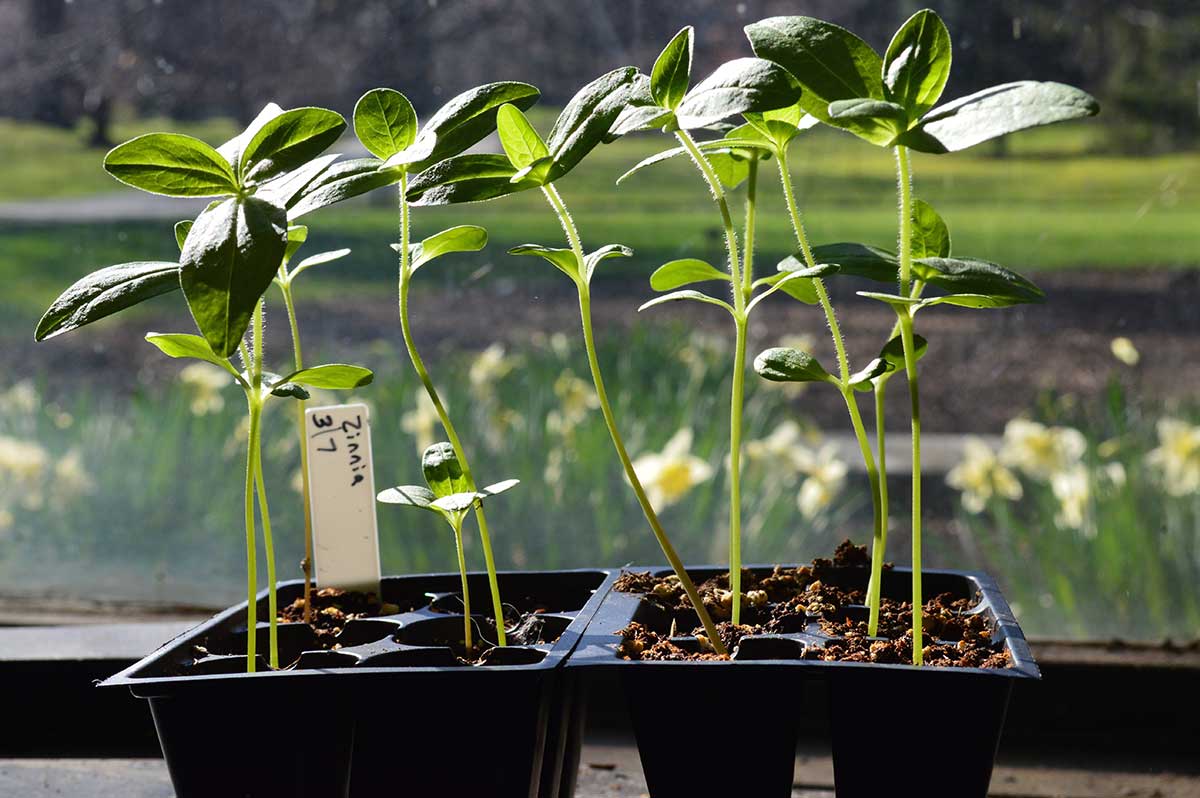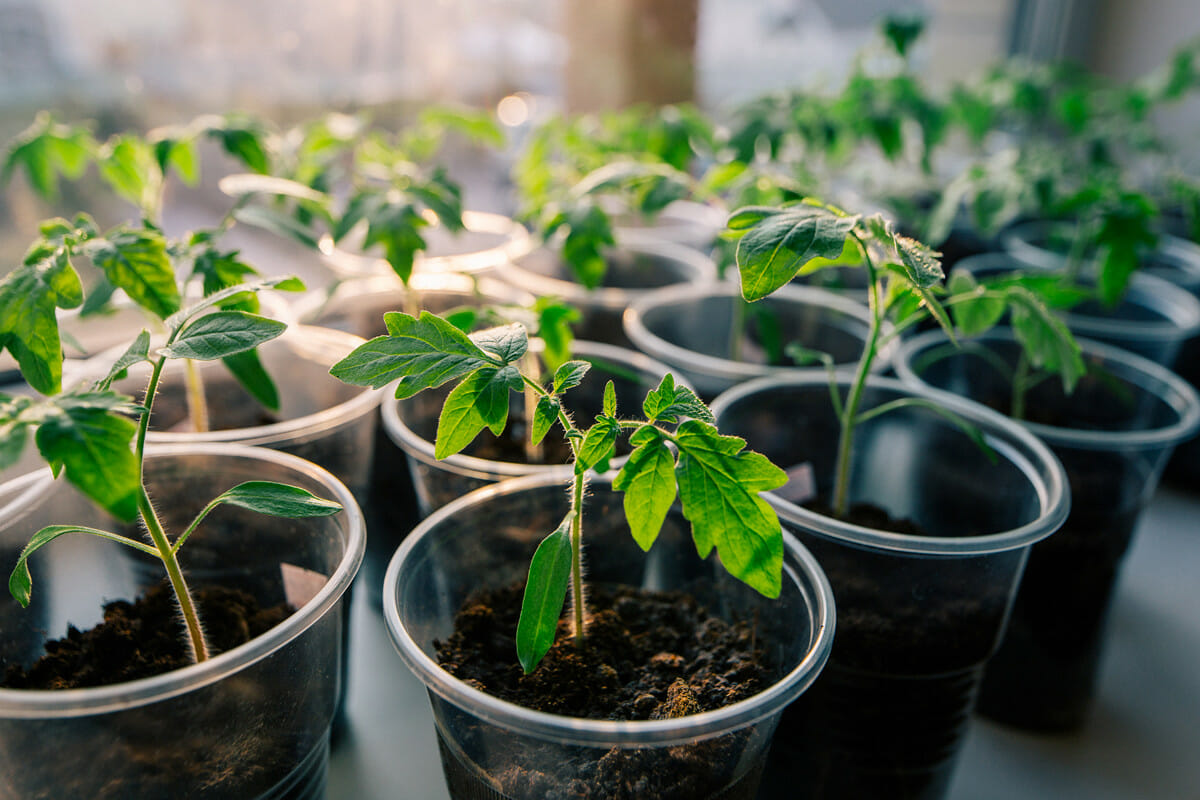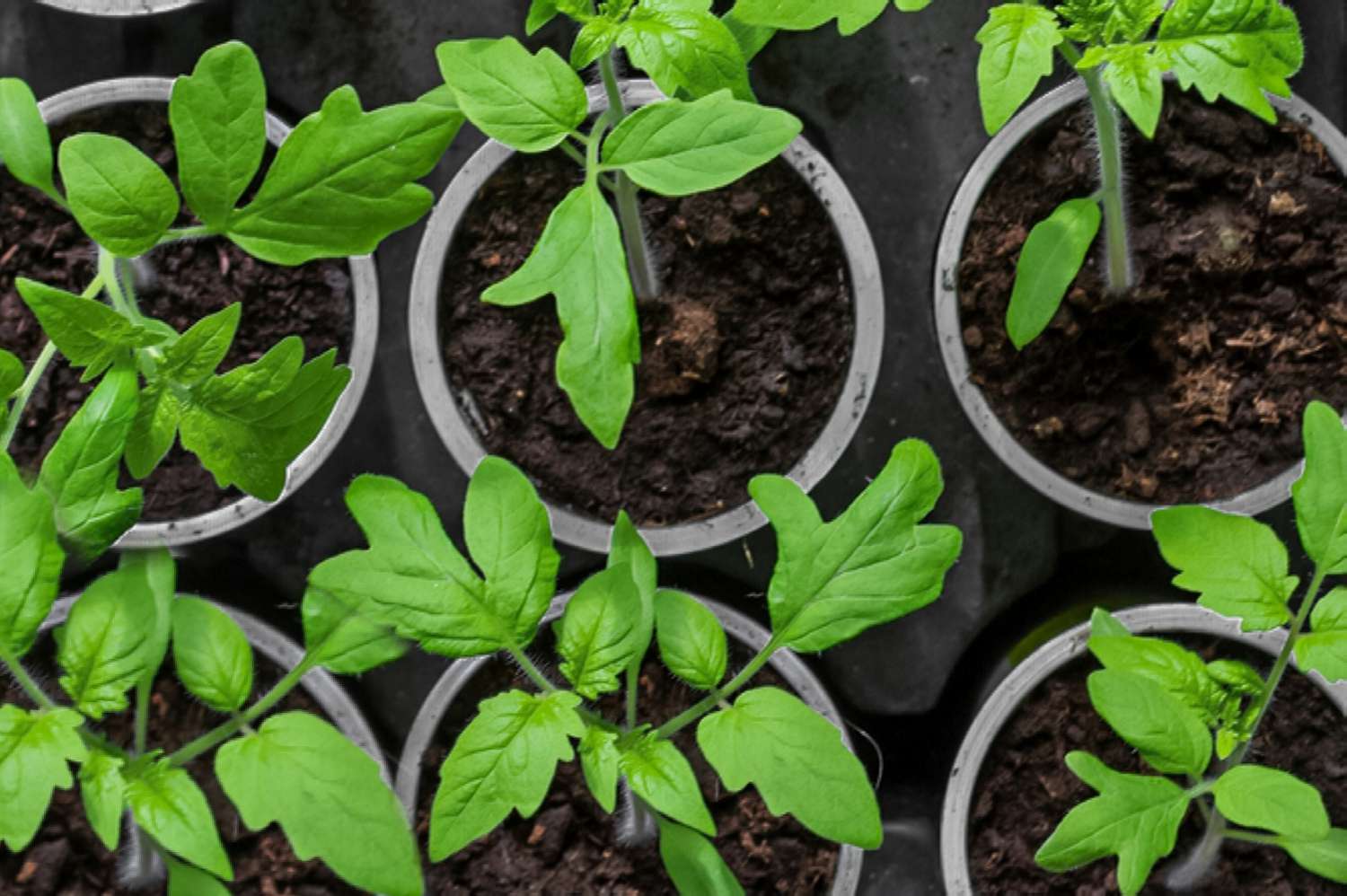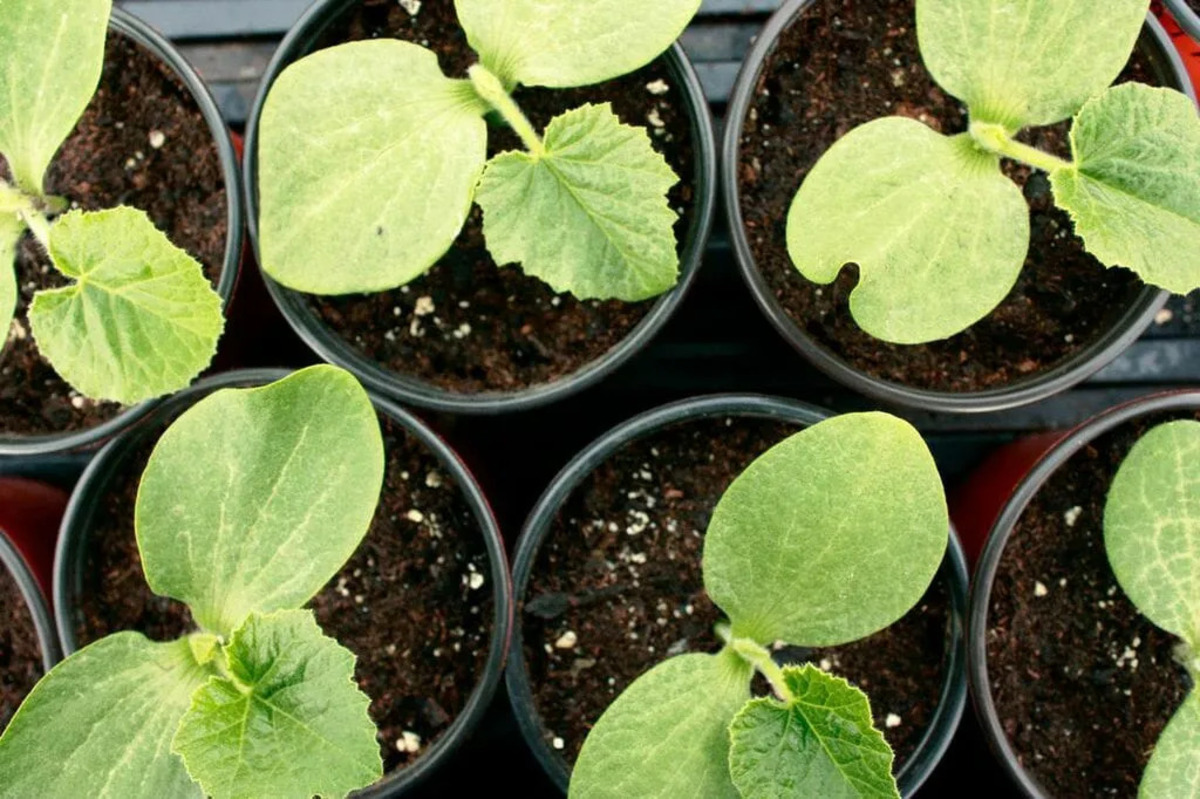Home>Types of Gardening>Edible Gardening>When To Plant Tomato Seedlings


Edible Gardening
When To Plant Tomato Seedlings
Published: January 4, 2024
Learn when to plant tomato seedlings for a successful edible gardening experience. Discover the ideal timing and tips for growing healthy and delicious tomatoes.
(Many of the links in this article redirect to a specific reviewed product. Your purchase of these products through affiliate links helps to generate commission for Chicagolandgardening.com, at no extra cost. Learn more)
Table of Contents
Introduction
Getting Ready for a Bountiful Harvest
So, you've decided to try your hand at growing your own tomatoes. Congratulations! Tomato plants are a fantastic addition to any edible garden, offering a delectable bounty of juicy, flavorful fruits that can be enjoyed fresh, cooked, or preserved. Whether you're a seasoned gardener or a novice with a green thumb, successfully cultivating tomato seedlings is a rewarding and enjoyable experience.
In this guide, we'll delve into the intricacies of planting tomato seedlings, focusing specifically on the optimal timing for this endeavor. By understanding the lifecycle of tomato seedlings, selecting the right planting time, and providing proper care, you can set the stage for a thriving tomato harvest.
Throughout this journey, we'll explore the nuances of nurturing tomato seedlings, from selecting the ideal planting site to fostering their growth through attentive care. By the end of this guide, you'll be equipped with the knowledge and confidence to nurture robust tomato plants and savor the fruits of your labor.
Let's embark on this horticultural adventure together, as we unlock the secrets to planting and tending to tomato seedlings. Get ready to roll up your sleeves, dig into the earth, and witness the magic of nature unfold before your eyes. It's time to sow the seeds of success and reap the delicious rewards that come with growing your own tomatoes.
Understanding Tomato Seedlings
Embarking on the Tomato Plant Journey
Before delving into the intricacies of planting tomato seedlings, it’s essential to grasp the fundamentals of these young plants. Tomato seedlings are the tender, juvenile stage of tomato plants, typically ranging from a few weeks to a couple of months old. During this phase, they are particularly vulnerable to environmental stressors and require attentive care to ensure their healthy development.
Tomato seedlings typically emerge from seeds that have been sown indoors or purchased from nurseries. Once the seeds germinate, they give rise to delicate sprouts that gradually develop into sturdy seedlings with proper care and nurturing. These young plants are characterized by their slender stems, initial sets of true leaves, and a burgeoning root system that anchors them in the soil.
Understanding the unique traits and growth patterns of tomato seedlings is pivotal for successfully cultivating robust tomato plants. As you embark on this horticultural journey, keep in mind that these young plants are sensitive to extreme temperatures, inadequate sunlight, and overwatering. By gaining insight into their specific needs and vulnerabilities, you can provide the optimal conditions for their growth and pave the way for a flourishing tomato harvest.
Throughout this guide, we’ll unravel the essential considerations for nurturing tomato seedlings, from selecting the opportune time for planting to fostering their growth in a conducive environment. By acquainting yourself with the intricacies of tomato seedlings, you’ll be better equipped to navigate the nuances of their care and witness their transformation into robust, fruit-laden plants.
Choosing the Right Time to Plant
Aligning with Nature’s Rhythms
When it comes to planting tomato seedlings, timing is of the essence. The decision of when to plant these young green gems hinges on a myriad of factors, including the local climate, frost dates, and the specific variety of tomatoes you intend to grow. By synchronizing your planting schedule with nature’s rhythms, you can optimize the conditions for your tomato seedlings to thrive.
One of the primary considerations when determining the ideal planting time is the last frost date in your region. Tomato plants are highly sensitive to frost, which can severely damage or even kill young seedlings. As a general rule of thumb, it’s advisable to wait until after the last anticipated frost before transplanting your tomato seedlings into the outdoor garden. This precautionary measure minimizes the risk of exposing the tender plants to potentially lethal cold temperatures.
Furthermore, the specific variety of tomatoes you plan to grow can influence the timing of planting. Determinate tomato varieties, which tend to mature more quickly and produce fruit within a concentrated timeframe, may be planted slightly earlier than indeterminate varieties. Understanding the growth habits and maturation timelines of different tomato cultivars empowers you to tailor your planting schedule to suit their unique needs.
Another vital aspect to consider is the prevailing weather conditions. While tomato seedlings thrive in warm, sunny environments, excessively high temperatures can also pose a threat to their well-being. Therefore, it’s crucial to strike a balance and aim for a time when the weather is consistently mild and conducive to plant growth.
By carefully evaluating these factors and heeding nature’s cues, you can pinpoint the opportune moment to plant your tomato seedlings, setting the stage for a successful and abundant harvest.
Preparing the Planting Site
Laying the Groundwork for Tomato Prosperity
Creating an optimal environment for your tomato seedlings is pivotal for their long-term health and productivity. Before transplanting these young plants into the garden, it’s essential to prepare the planting site meticulously, ensuring that it offers the ideal conditions for their growth and development.
The first step in readying the planting site is to assess the soil quality. Tomato plants thrive in well-draining, nutrient-rich soil that provides a stable foundation for their root systems. Conduct a soil test to gauge its pH level and nutrient composition, and amend it as needed to create an optimal growing medium for your tomato seedlings. Incorporating organic matter, such as compost or well-rotted manure, can enhance the soil’s fertility and structure, providing a conducive habitat for the young plants.
Sunlight is a vital component of a thriving tomato garden. Select a planting site that receives ample sunlight, ideally six to eight hours per day, to fuel the photosynthetic processes essential for robust plant growth and fruit production. Adequate sunlight exposure not only fosters sturdy plant development but also contributes to the flavor and quality of the harvested tomatoes.
Protecting the tender seedlings from harsh environmental elements is crucial in their early stages. Consider erecting a sturdy trellis or installing tomato cages to support the plants as they grow, preventing them from sprawling on the ground and minimizing the risk of damage from pests or diseases. Additionally, providing a windbreak, such as a fence or hedgerow, can shield the young plants from strong winds, safeguarding them against physical stress and breakage.
As you prepare the planting site, bear in mind the significance of adequate spacing between the tomato plants. Providing ample room for each plant to spread its roots and foliage not only minimizes competition for resources but also facilitates air circulation, reducing the risk of fungal diseases. Adhering to the recommended spacing guidelines for your specific tomato variety is essential for optimizing plant health and productivity.
By conscientiously preparing the planting site and tailoring it to meet the unique needs of your tomato seedlings, you lay the groundwork for a thriving and abundant harvest, setting the stage for a fruitful and rewarding gardening experience.
Planting and Caring for Tomato Seedlings
Nurturing the Green Gems
As you embark on the journey of planting and caring for tomato seedlings, it’s essential to provide attentive and consistent care to ensure their robust growth and eventual fruiting. From the moment you transplant them into the garden, these young plants rely on your nurturing touch to thrive and fulfill their bountiful potential.
When transplanting your tomato seedlings into the garden, handle them with care to minimize root disturbance and shock. Gently loosen the roots from their containers and plant them in pre-dug holes, ensuring that the soil level matches the depth at which they were previously growing. Firmly tamp the soil around the base of the seedlings to secure them in place and eliminate air pockets that could impede root development.
Watering plays a pivotal role in the initial establishment of tomato seedlings. Provide ample moisture to the newly transplanted plants, ensuring that the soil remains consistently moist but not waterlogged. As the seedlings acclimate to their new environment, monitor the soil moisture levels diligently, adjusting your watering regimen to accommodate their evolving needs.
Feeding your tomato seedlings with a balanced fertilizer can bolster their growth and vitality. Select a fertilizer formulated specifically for tomatoes or one with a balanced NPK (nitrogen, phosphorus, and potassium) ratio to provide the essential nutrients for robust plant development. Apply the fertilizer according to the package instructions, taking care not to over-fertilize, which can lead to excessive foliage growth at the expense of fruit production.
Pruning and training tomato plants are integral aspects of their care regimen. Remove any suckers that emerge in the leaf axils, redirecting the plant’s energy towards fruit production rather than excessive foliage. Additionally, securing the plants to trellises or cages as they grow encourages upward growth, minimizes disease susceptibility, and facilitates easier access for maintenance tasks and harvesting.
Vigilance is key in safeguarding your tomato seedlings from potential threats, such as pests and diseases. Regularly inspect the plants for signs of pest infestation or disease symptoms, intervening promptly to mitigate any issues that may arise. Implementing organic pest control methods and maintaining good garden hygiene can help preserve the health and vigor of your tomato plants.
By tending to your tomato seedlings with diligence and care, you foster their growth and resilience, setting the stage for a thriving garden brimming with plump, flavorful tomatoes. Your nurturing efforts will soon yield a bountiful harvest, rewarding you with the fruits of your labor and the satisfaction of cultivating your own homegrown produce.
Conclusion
Celebrating the Tomato Plant Journey
As we conclude this horticultural exploration, it’s evident that the journey of planting and nurturing tomato seedlings is a gratifying and enriching endeavor. From understanding the unique traits of these young plants to selecting the opportune time for planting and providing attentive care, every step in this process contributes to the flourishing of robust, fruit-laden tomato plants.
By immersing ourselves in the nuances of tomato seedling care, we’ve uncovered the essential considerations for fostering their growth and productivity. From preparing the planting site to tending to the young plants with diligence and care, each facet of this journey plays a pivotal role in shaping the eventual harvest.
As you witness the transformation of tender seedlings into thriving plants laden with plump, flavorful tomatoes, you’ll savor the fruits of your labor and revel in the satisfaction of cultivating your own homegrown produce. The vibrant hues and delectable flavors of freshly harvested tomatoes will serve as a testament to your dedication and nurturing touch throughout the growing season.
Whether you’re a seasoned gardener or a novice enthusiast, the process of planting and caring for tomato seedlings offers a wealth of opportunities for learning, creativity, and connection with the natural world. As you tend to your garden, you’ll forge a deeper appreciation for the intricate dance of life unfolding in your backyard, fostering a sense of harmony and abundance.
As you embark on future gardening endeavors, may the knowledge and insights gained from this guide continue to inspire and empower you. Embrace the joys of tending to your garden, and relish in the anticipation of savoring the luscious, sun-ripened tomatoes that will grace your table, a testament to the beauty and abundance of nature’s bounty.
So, as you embark on your next gardening adventure, may your days be filled with the simple pleasures of nurturing green life, and may your garden flourish abundantly, yielding a rich tapestry of homegrown delights.
